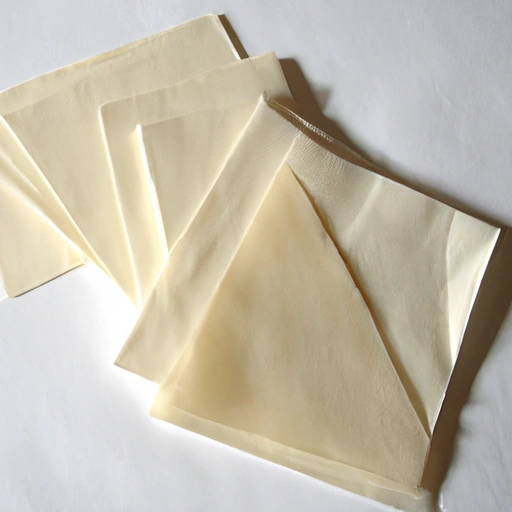Wonton Wrapper
Description

Wonton wrappers are thin sheets of dough commonly used in various Asian cuisines to encase fillings for dumplings, soups, and other savory dishes. Made primarily from wheat flour, water, egg, and salt, these wrappers are prized for their delicate texture that becomes pleasantly chewy when cooked. They are typically square-shaped and available in different sizes, ranging from 3.5 inches (approx. 8.9 cm) to 4.5 inches (approx. 11.4 cm) on each side, catering to different culinary needs.
Wonton wrappers are a versatile ingredient and can be used in diverse cooking applications. From traditional Chinese wontons to creative fusion dishes, they provide a simple yet essential base for an array of delightful recipes. Whether boiled, steamed, fried, or baked, these wrappers contribute to the final dish's texture and overall experience.
Common uses
Wonton wrappers are commonly used to create classic wonton soup, deep-fried wontons, and a variety of dumplings. They are also employed in innovative culinary creations, such as mini taco shells, ravioli, or as a base for appetizers. Their ability to hold a range of fillings and adapt to numerous cooking methods makes them an indispensable ingredient in both home and professional cooking.
Nutritional value
Calories
A typical serving of wonton wrappers, about 3 to 4 pieces (or 28 grams), contains roughly 60 to 80 calories, depending on their thickness and specific ingredients used.
Protein
Wonton wrappers are relatively low in protein, with an average serving providing about 2 to 3 grams.
Fat
These wrappers are generally low in fat, with less than 1 gram per serving. However, this value can increase significantly if the wrappers are used to make deep-fried dishes.
Carbohydrates
As a wheat-based product, wonton wrappers are primarily a source of carbohydrates, with a serving containing about 14 to 20 grams.
Vitamins
Wonton wrappers may contain small amounts of certain B vitamins, particularly thiamin and folate, due to the wheat flour content.
Minerals
They might also provide trace amounts of minerals such as iron, selenium, and calcium.
Health benefits
While wonton wrappers are not typically known for their health benefits, they can be part of a balanced meal when combined with nutrient-rich fillings such as vegetables, lean meats, or seafood. Using them in steamed or boiled preparations can also be a healthier choice compared to frying.
Potential risks
As with any wheat-based product, wonton wrappers contain gluten and are not suitable for individuals with celiac disease or gluten sensitivity. Additionally, overconsumption, especially in fried form, may contribute to an excessive calorie intake.
Common recipes
Wonton wrappers are essential in recipes like wonton soup, Sichuan red oil wontons, and Shanghai-style wontons. They are also used to make appetizers like cream cheese wontons and can be a creative alternative to pasta in dishes like lasagna cups.
Cooking methods
These versatile wrappers can be boiled, steamed, fried, or baked. Boiling is common for soups, steaming for delicate dumplings, frying for crispy treats, and baking for lighter, crunchy snacks or desserts.
Pairing with other ingredients
Wonton wrappers pair well with a variety of fillings, including ground pork, shrimp, chicken, vegetables, and even sweet ingredients for dessert applications. They also work well with dipping sauces, broths, and various seasonings.
Summary
Wonton wrappers are a multi-purpose ingredient integral to many Asian dishes. Their simplicity and adaptability allow for a wide range of culinary uses across different cultures. Whether used in traditional Asian recipes or inventive fusion cuisine, wonton wrappers offer an approachable way to explore the art of cooking with dough. Their nutritional profile is modest, providing a base for the addition of various fillings to create a wholesome and satisfying meal.